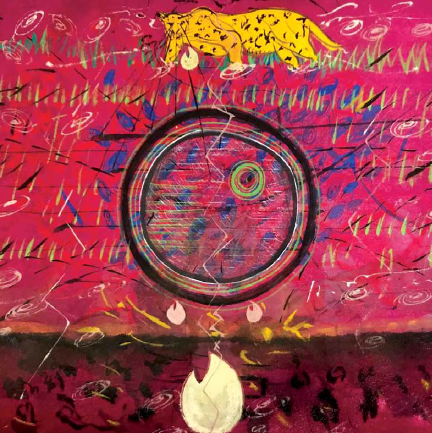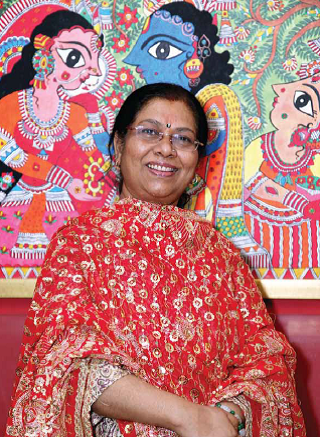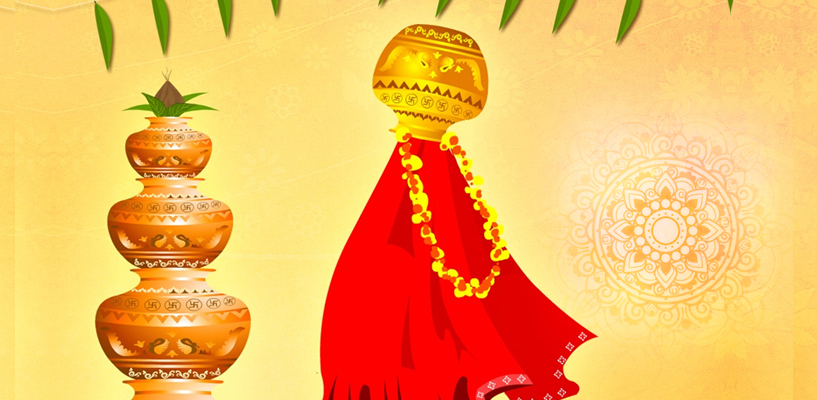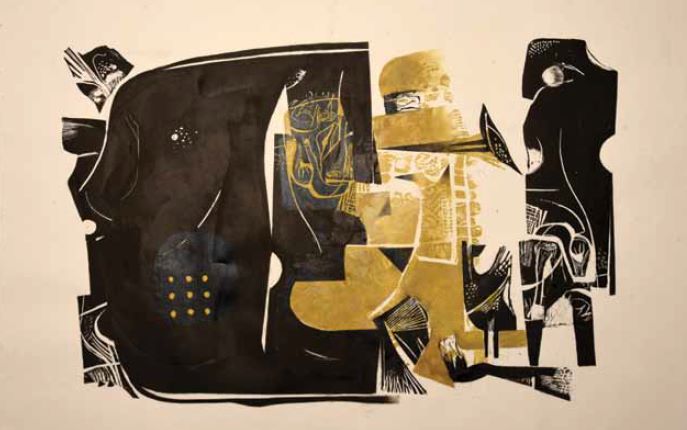
A first-person account by artist Vinay Amber who draws inspiration from literature, poetry and the struggles of human society
My journey to the art world has been far from straightforward. Before entering the political realm, I sought to understand the complexities of the human experience. I began as a photojournalist and then transitioned to becoming an investigative journalist, dedicating fifteen years to this profession. Alongside my journalistic pursuits, I nurtured my passion for music and honed my skills in classical vocal and instrumental forms. With a strong affinity for Left Philosophy, I actively engaged in left-wing politics. Somnath Hore’s words always resonated with me, “The creators, be it a writer, a poet or a painter, should become a Marxist for a few days”. I believe that embracing Marxist principles can enhance one’s understanding and vision.
My transition to the art world was a direct leap from the world of newspapers. As an artist, I draw inspiration from world literature, poetry and the struggles of human society. My artistic creations aim to dismantle religious and unscientific myths, much like the “Inversions of Kabir.” Through my paintings, I offer women the space to express themselves freely, while also reflecting traditional myths through the symbol of the Moon, representing the plight of the oppressed.
Despite having a profound understanding of abstract art, my heart lies in figure-oriented paintings. Art for me, knows no geographical boundaries; it is a universal concept. The interconnectedness of power and public, war and treaties, hunger and thirst and the hypocrisy of religion transcends borders and it is the perspective that varies. Everywhere, there exists a merchant exploiting these elements.


Understanding the politics of art in a broader sense is an ongoing pursuit for me and I am actively engaged in this exploration. A pivotal moment in my career was in 2004, when I participated in the World Social Forum held in Mumbai, where millions of people were involved. This event brought me recognition in the art world.
For the past 25 years, I have been a freelance painter and activist, working not only in my studio but also supporting various cultural and public movements. I co-founded the Ityadi Art Foundation two decades ago and it has been organizing the Jabalpur Art Literature and Music Festival for the last five years. This esteemed festival serves as a platform for artists from diverse fields to come together and address social and cultural issues.
I have always had a fascination with expressing myself in various languages, constantly changing and evolving to find the most effective means of communication. Pretending to be ignorant or turning a blind eye to the world’s outcry and crises has never been an option for me. Instead, I embraced the language of art, which has proven to be rich, attractive and highly communicative. Over the past 30 years, I’ve dedicated myself to mastering this language, using bright colours, thick lines and grayscale to convey a myriad of dialectical subjects and ideas. My artistic endeavours aim to create new forms that resonate with the pursuit of human liberation.
 As an artist, I draw inspiration from society and the unique vision I’ve cultivated throughout my life. Witnessing the disintegration of religious concepts and the clash of cultural, feudal and caste systems with humanity deeply affected me. The continuous extinction of human values became a central subject in my work, whether on paper or canvas, using ink or colour. My paintings are figurative, deliberately including human figures to evoke sensitivity and compassion. By depicting flying fishes and the moon alongside human figures, I challenge prevailing myths in society. My art is motivated by a quest for truth that aligns with the well-being of all humanity. I paint in support of humanity, drawing parallels to the soul-stirring performances of Kumar Gandharva and the rhythmic tappe by Malini Rajurkar. I aspire to create a harmonious dissonance in my paintings, akin to the duet of Pandit Ravi Shankar and Ustad Ali Akbar Khan, where beauty and melody coexist.
As an artist, I draw inspiration from society and the unique vision I’ve cultivated throughout my life. Witnessing the disintegration of religious concepts and the clash of cultural, feudal and caste systems with humanity deeply affected me. The continuous extinction of human values became a central subject in my work, whether on paper or canvas, using ink or colour. My paintings are figurative, deliberately including human figures to evoke sensitivity and compassion. By depicting flying fishes and the moon alongside human figures, I challenge prevailing myths in society. My art is motivated by a quest for truth that aligns with the well-being of all humanity. I paint in support of humanity, drawing parallels to the soul-stirring performances of Kumar Gandharva and the rhythmic tappe by Malini Rajurkar. I aspire to create a harmonious dissonance in my paintings, akin to the duet of Pandit Ravi Shankar and Ustad Ali Akbar Khan, where beauty and melody coexist.
In my art, I strive to create works that resonate with the common man, much like the fictions and stories of renowned authors such as Fanishwar Naath Renu and Munshi Premchand. I draw inspiration from the poems of Avtar Singh Sidhu Paash and Neruda, as I endeavour to connect with people through my art, touching their hearts and minds.
Among my favourite poets are Paash, Shimborshka, Dhoomil, Navarun Bhattacharya, Sarveshwar Dayal Saxena, Pablo Neruda and Naresh Saxena. I seek to infuse the vigor and warmth of their poems into my artwork. In pursuit of simplicity, I draw inspiration from the satires of Hari Shankar Parsai and the stories of Fanishwar Nath Renu.
Through my art, I hope to convey powerful messages that resonate with the essence of humanity and inspire positive changes in the world.






















 The techniques employed in sculpture are as diverse as the materials used. Carving, a method commonly associated with stone or wood, involves removing excess material to reveal the desired form. Modeling, on the other hand, involves adding and manipulating material, often using clay, to create the desired shape. Casting allows for the replication of sculptures using moulds and various casting materials like bronze or resin. Welding and forging enable the creation of metal sculptures, while assemblage art brings together disparate objects to form a cohesive whole. Each technique requires expertise, precision, and a deep understanding of the chosen material’s properties.
The techniques employed in sculpture are as diverse as the materials used. Carving, a method commonly associated with stone or wood, involves removing excess material to reveal the desired form. Modeling, on the other hand, involves adding and manipulating material, often using clay, to create the desired shape. Casting allows for the replication of sculptures using moulds and various casting materials like bronze or resin. Welding and forging enable the creation of metal sculptures, while assemblage art brings together disparate objects to form a cohesive whole. Each technique requires expertise, precision, and a deep understanding of the chosen material’s properties.
 Etching, another traditional technique, emerged in the Middle Ages and gained popularity during the Renaissance. In etching, an image is incised into a metal plate, usually copper or zinc, using acid or a sharp tool. The plate is then inked, and the excess ink is wiped away, leaving the ink only in the incised lines. By pressing the plate onto paper, the image is transferred, revealing delicate lines and intricate details. Etching allows for a wide range of tonal variations and is favored by artists for its subtlety and precision.
Etching, another traditional technique, emerged in the Middle Ages and gained popularity during the Renaissance. In etching, an image is incised into a metal plate, usually copper or zinc, using acid or a sharp tool. The plate is then inked, and the excess ink is wiped away, leaving the ink only in the incised lines. By pressing the plate onto paper, the image is transferred, revealing delicate lines and intricate details. Etching allows for a wide range of tonal variations and is favored by artists for its subtlety and precision.



 " >
" >
 " >
" >